I have always said that if you get a couple of kittens, you can cancel your cable subscription. Kittens are fuzzy little packages of boundless energy that can amuse themselves and you for hours on end. As our cats get older and enter into their senior years, however, they become more sedentary; according to Cornell University, that in turn makes them more prone to obesity which puts them at increased risk of other serious, medical conditions such as:
Unfortunately, your cat is not likely to ever walk past a mirror, catch a glimpse of herself, and vow to eat less and exercise more. And not every cat is going to be up for taking leash walks. So here are some simple tips to get your senior cat up and moving more.
1. Try using toys
Get your cat some new toys. Even if she has a basket of old favorites, get her some new and novel ones. And not just the ones that you think are cute. Figure out what she likes, so she’ll play with them. Ask yourself:
- Does she like noise or not?
- Texture or no texture?
- Is she a catnip junkie or could she care less?
- Does she like boxes?
- Does she like bags?
- Does she like crumbled paper to bat around the room?
Anything that interests her and is safe is a good choice. (As tempting as it may be, stay away from string toys since string can be swallowed and cause serious problems.)
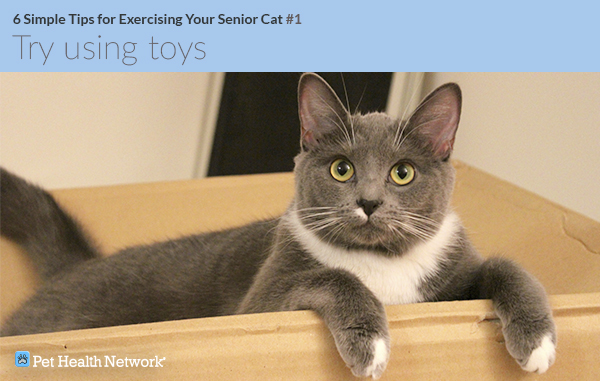
2. Provide towers
Cat trees aren’t only for show. Cats love to jump and climb up high, especially if it puts them in a position to look down on you or to watch birds and other wildlife out the windows. Just be aware of your aging cat’s abilities/limitations and make your choice of tower one that she can actually surmount.
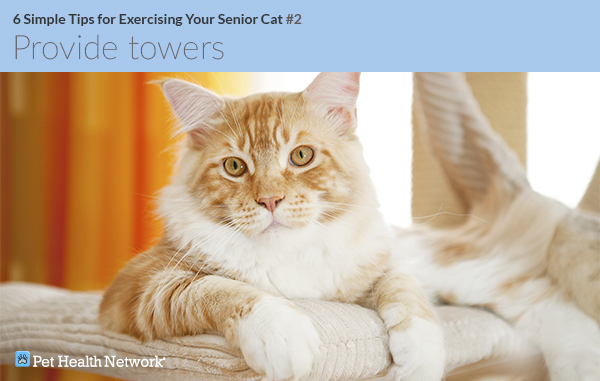
3. Make treats count
It’s natural that you want to give your cat treats and rewards for exercising, but make them count. Make her work for them. Put them up high on that tower. Put them inside toys that act as puzzles so your cat has to play to get the treats out. Roll them across the floor one at a time so your cat has to chase them (what my wife calls ‘kibble hockey’). Do something that requires more energy expenditure than just plopping them down in front of your cat’s sweet face.
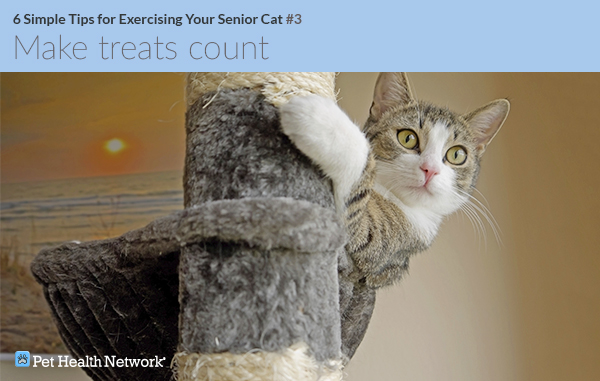
4. Transform the environment
Again, use everyday activities to your advantage and encourage your cat to get up and move. Changing the location of the litter pan might not work in everybody’s favor, but try feeding your cat on a higher plane – especially if your cat has free choice access to dry food. If your cat has to climb steps or jump up on something to get to the food, she might be just a little bit more motivated to make the effort. Just imagine how it would impact your snacking if you had to get up off the couch and walk into the kitchen every time you wanted another potato chip. Again (as with cat towers), always make sure that your cat can get to the food. Take baby steps, as it were; you can always make it harder over time.
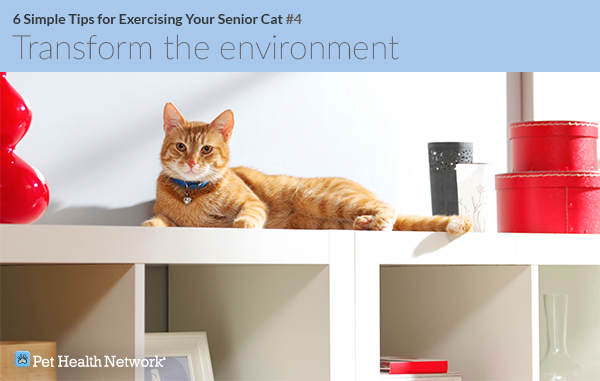
5. Tap into that inner tiger
Use your cat’s natural predatory instincts to really engage her in play with you. Use laser pointers, wand toys, feathers and the like to tempt and to tease your cat into playing. Note: Especially with a laser pointer be careful to always let the cat catch something (anything) in the end. You don’t want to frustrate your cat. You want to exercise and then reward. Chase her, play hide and seek, and enjoy interacting with your cat. You’ll both get a little bit of exercise in the process.
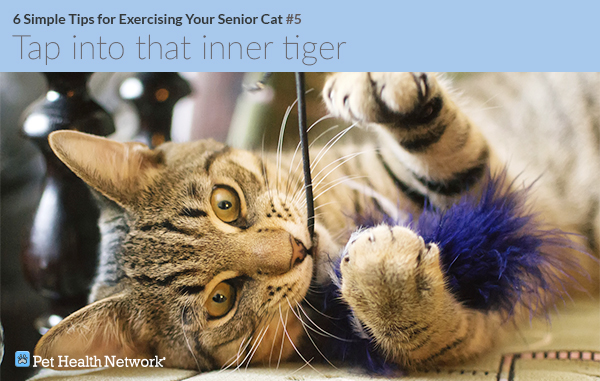
6. Tailor your exercises
Always tailor any exercise program to your cat’s individual situation and abilities. Talk to your veterinarian to make sure that your senior cat is healthy enough for increased activity, to address any physical constraints she might have, and to choose activities that are safe and appropriate. Have fun while working together toward a happier, healthier, senior cat.
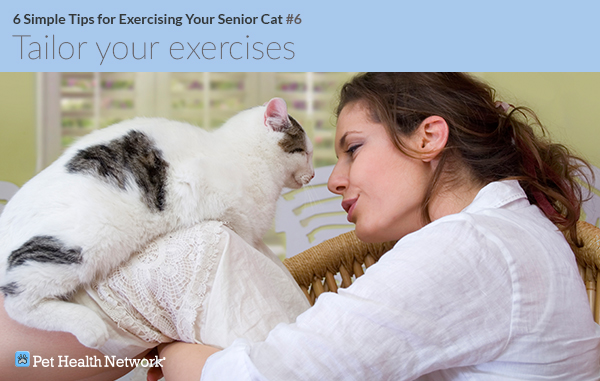
If you have any questions or concerns, you should always visit or call your veterinarian -- they are your best resource to ensure the health and well-being of your pets.
